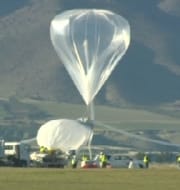NASA launches near-space monitoring super pressure balloon from New Zealand
The National Aeronautics and Space Administration (NASA) has successfully launched a super pressure balloon to conduct near-space scientific investigations.
It was launched from South Island Wanaka Airport, New Zealand in the fifth attempt. Earlier four attempts to get the massive balloon airborne were thwarted by bad weather.
Key facts
- The balloon is 532,000 cubic metres and aims to remain airborne for more than 100 days.
- It is expected to circumnavigate the globe in the mid-latitudes of southern hemisphere once every one to three weeks, depending on wind speeds in the stratosphere.
- Balloon’s operational float altitude is 33.5 kms and it will be visible from the ground, particularly at sunrise and sunset in the southern hemisphere’s mid-latitudes.
- Its flight operations throughout the mission will be controlled by NASA’s balloon experts at Columbia Scientific Balloon Facility and NASA’s Wallops Flight Facility, Virginia.
Note: Long-duration balloon flights at constant altitudes play an important role in providing inexpensive access to the near-space environment for science and technology.
Month: Current Affairs - May, 2016



suraj paul
May 18, 2016 at 3:32 pmComment: very nice technology
suraj paul
May 18, 2016 at 3:32 pmComment: very nice technology
Knut Holt
May 18, 2016 at 11:45 pmProbably this is also a test for the possibility of deploying similar balloons in the Martien athmosphere .
Knut Holt
May 18, 2016 at 11:45 pmProbably this is also a test for the possibility of deploying similar balloons in the Martien athmosphere .